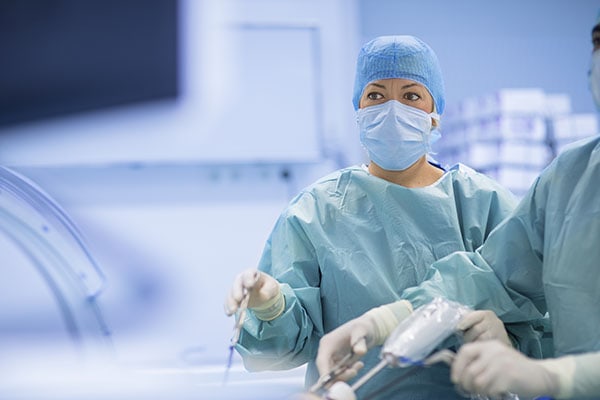Diagnostic and surgical hysteroscopy
Hysteroscopy is a surgical technique that allows the diagnosis and treatment of uterine cavity pathologies. Like any surgical procedure, it requires sedation or anesthesia to be performed. A lens (Hysteroscope lens) of small size is introduced through the cervix, and the uterine cavity is distended with a liquid medium, usually a saline solution, that allows the observation of the inside of the uterus. Depending on the type of hysteroscope, the procedure will be diagnostic or surgical.

What is diagnostic and surgical hysteroscopy?
The diagnostic hysteroscopy is the visual examination of the cervix and the inside of the uterus using a thin, lighted tube called a hysteroscope. It allows easy access to the cervix and uterus, allowing evaluation of the lining of these structures and pathologies that may alter the uterine cavity, such as polyps, myomas, malformations, or scars and adhesions.
During the procedure, therapeutic maneuvers can be performed, such as taking a tissue sample (biopsy), removing polyps or myomas, resectioning partitions or scars, or preventing bleeding with cauterization (destruction of the tissue employing electric current, freezing, heat, or chemicals).
The diagnostic hysteroscopy can be done with local anesthesia or without using it (each time with fewer procedures) at the physician’s office or in a clinic with rooms for outpatient procedures.
The most invasive therapeutic hysteroscopy procedures can be performed in an operating room under local, regional, or general anesthesia. In surgical hysteroscopy, the hysteroscope equipment is thicker, and it will be necessary to perform the surgery in the operating room because it requires cervical dilation and, therefore, sedation.
When is a hysteroscopy indicated?
It is indicated when the following are suspected:
- Uterine adhesions
- Endometrial polyps
- Myomas
- Uterine septum
- IUD extraction and other devices
- Menstrual disturbances
- Implantation failures
- Before the onset of high-complexity fertility treatments such as in vitro fertilization
- Recurrent pregnancy losses
- Among others
What are the risks of a hysteroscopy?
As with any surgical procedure, complications may arise in a hysteroscopy. Some possible complications may include the following:
- Infection.
- Pelvic inflammatory disease.
- Perforation of the uterus (rare)/damage to the cervix.
- Complications of the fluid or gas used to expand the uterus.
The patient may have slight vaginal bleeding and colic one to two days after the procedure. Other risks may exist depending on the specific health condition of the patient.
Contact us in our lines:
- Medellín: +57(4) 268 80 00
- Bogotá: +57(1) 619 00 17, +57(1) 746 98 69 and +57 312 774 8007
- Cartagena: +57(5) 693 04 34
- Pereira: +57(6) 340 17 09
- Whatsapp: +57 314 623 6485




